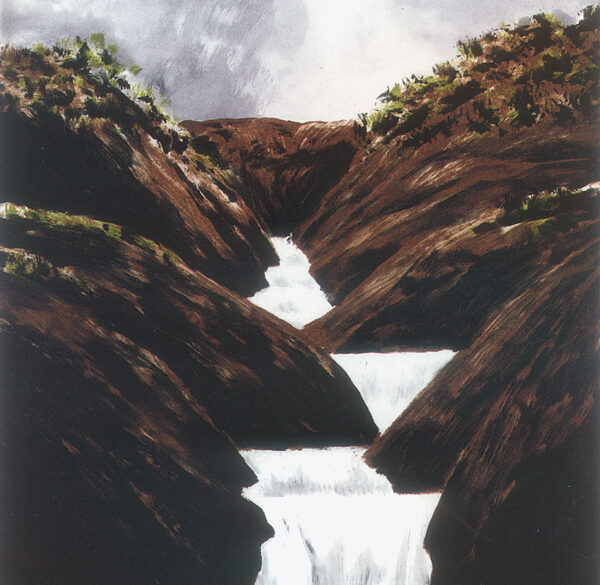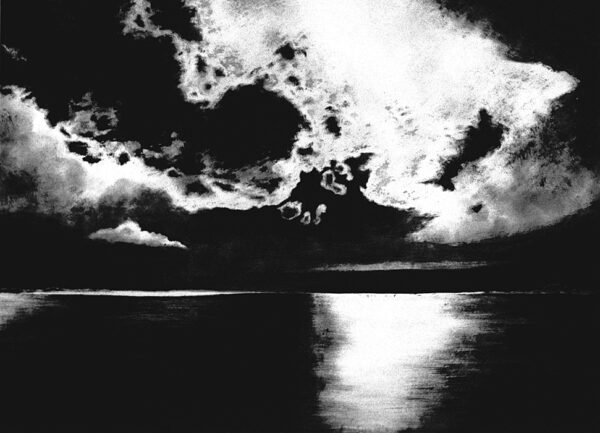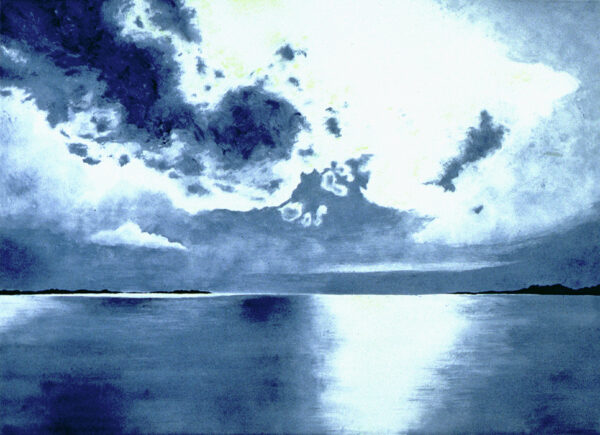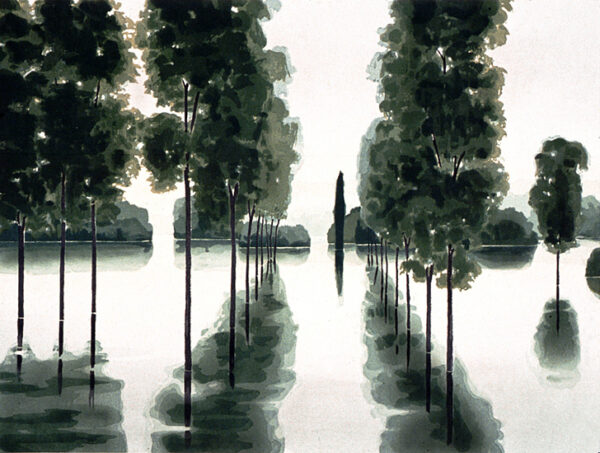Reviewing April Gornik’s work in 2000 for ARTnews, Hilary Stunda wrote, “Palpable and fecund, Gornik’s paintings embody sensation and sensuality. One can almost feel the chill of shadow, taste the salty air. Conjured from memory, her smooth and dense landscapes are neither realistic nor abstract renderings…Gornik creates a dreamy light that brings the viewer to the threshold of a natural happening.”
April Gornik was born in Cleveland, Ohio, in 1953. She studied at the Cleveland Institute of Art from 1971 to 1975, and in 1976 moved to Nova Scotia to finish her BFA at the Nova Scotia College of Art and Design, where she was trained as a conceptual artist. After she graduated, she stayed in Halifax for a few months and, as she later remembered, “I had a real honest-to-God vision…I drew out the vision and then I painted it.” She started to paint on plywood and found that the vision had become landscapes.
In a 1999 catalog essay, Kurt Vonnegut imagined Gornik’s beginnings as an artist: “ I didn’t know her then, but I’ve pictured her at sixteen, a junior in Catholic high school. … In my tableau, I see her standing alone on the shore of Lake Erie, gazing out at the sky and the clouds and water.” Vonnegut guessed that Lake Erie is where Gornik returns in her mind for what he called her “haltingly melodic, meditative, mantra-like waterscapes and landscapes.”
In 1978 Gornik moved to New York. “Here I was,” she says, “this person who had eschewed painting for lo these many years, painting what was basically the worst, most-black-sheep-version of painting you could possibly be doing—landscape. And I was excited about it.” In 1981 she had her first solo show at the Edward Thorp Gallery in New York, where she was represented for many years.
In 1984 Gornik was included in “Paradise Lost; Paradise Regained” at the American Pavilion of the Venice Biennale. She had work in the Whitney Biennial in 1999. Janet Kutner wrote in ARTnews in 1997 that Gornik, “perhaps more than any other contemporary artist, has returned the romantic tradition of landscape painting to its rightful place and made a love for the sublime acceptable.” There is a matter-of-fact quality to her technique that acknowledges doubters before it completely seduces them.
Gornik has exhibited extensively in the United States and abroad and is currently represented by Miles McEnery Gallery, New York. In 2004 the Neuberger Museum at the State University of New York, Purchase, showed her work and published a monograph jointly with Hudson Hills Press. April Gornik’s work is held in many public collections, including the Metropolitan Museum of Art, the Whitney Museum of American Art, and the Museum of Modern Art, New York. She lives in Long Island with her husband, the painter Eric Fischl.
-Kim Bennett, Crown Point Press
BOOKS ABOUT THE ARTIST




